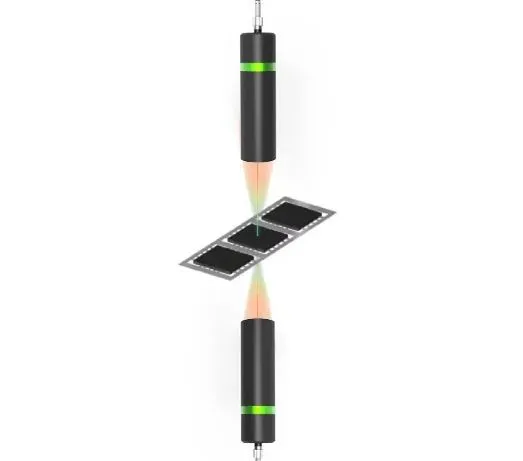【Industry Application】Semiconductor Packaging Thickness Measurement
Nov 29, 2024
In the critical field of encapsulation thickness measurement, the application of new technologies shines like brilliant stars, bringing revolutionary breakthroughs to precise measurements. Among these, the color confocal method stands out as a focal point of attention. Color confocal, also known as spectral confocal, has unique advantages; it possesses a strong resistance to interference from the material and color variations of the target object. In the complex and diverse environment of the encapsulation industry, materials are abundant and varied, ranging from common plastics to rare special composite materials, and colors are as diverse as a rainbow. However, this magical measurement method is like having an all-seeing "wise eye," capable of accurately measuring the thickness of materials whether they are dark black antistatic encapsulation materials or nearly transparent polymer encapsulation films. It acts like a meticulous master, not at all affected by differences in optical properties of materials or by how colors absorb or reflect light, resulting in any measurementDeviation. The TS-C series spectral confocal can achieve high-speed and high-precision height measurement, a characteristic that is extremely significant for encapsulation thickness measurement. On the busy production lines of large-scale encapsulation, speed is a key factor in determining production efficiency. Color confocal measurement technology acts like a precise and efficient engine, not only quickly acquiring data but also steadfastly maintaining the defense of precision. The thickness of each encapsulation can be accurately determined without error, perfectly meeting the two core requirements of production efficiency and quality control, like equipping the production line with a precise "navigator." This technology is based on the coaxial measurement principle. In actual encapsulation processes, the target object may tilt for various reasons, which in the realm of traditional measurement methods often leads to a nightmare of inevitable measurement errors. But with the "magic weapon" of the coaxial measurement principle, color confocal technology is equipped with a solid "armor," effectively avoiding such thorny issues. Even if the target object has a certain tilt angle, it can still accurately measure the thickness as steady as a rock, thereby ensuring the stability of online measurement. With it, the production line no longer needs to frequently interrupt for adjustments due to measurement problems, and the continuity and stability of production are greatly enhanced. It's like injecting a "booster shot" into the high efficiency and high quality production of the encapsulation industry, strongly propelling encapsulation technology and industry towards a more splendid direction.

The TronSight Spectral Confocal Displacement Sensor has the following features:
·Coaxial high-precision measurement: Using the coaxial measurement principle, it can accurately measure parameters such as the displacement and thickness of objects, even in narrow spaces or complex structures.
·High resolution: It can achieve nanometer-level resolution, capable of detecting small displacement changes.
·Low requirements for the measured surface: Suitable for various material surfaces, including mirror, transparent, translucent, film layers, metal rough surfaces, multi-layer glass, etc.
·Large measurement angle: It has a large measurement angle, with a maximum measurable tilt angle of up to 60 degrees, capable of adapting to objects with different shapes and angles.
·High real-time performance: Sampling speed is fast, capable of real-time acquisition of measurement data, suitable for dynamic measurement and online detection.
·Strong anti-interference capability: Using white light source, it is not affected by environmental light interference and can work stably in complex environments.
·Easy to install and use: Compact structure, no electronic components inside, not affected by environmental interference.
·Multi-parameter measurement: It can not only measure displacement but also simultaneously measure and output parameters such as thickness and distance.

.jpg?x-oss-process=image/resize,w_100/quality,q_100)








